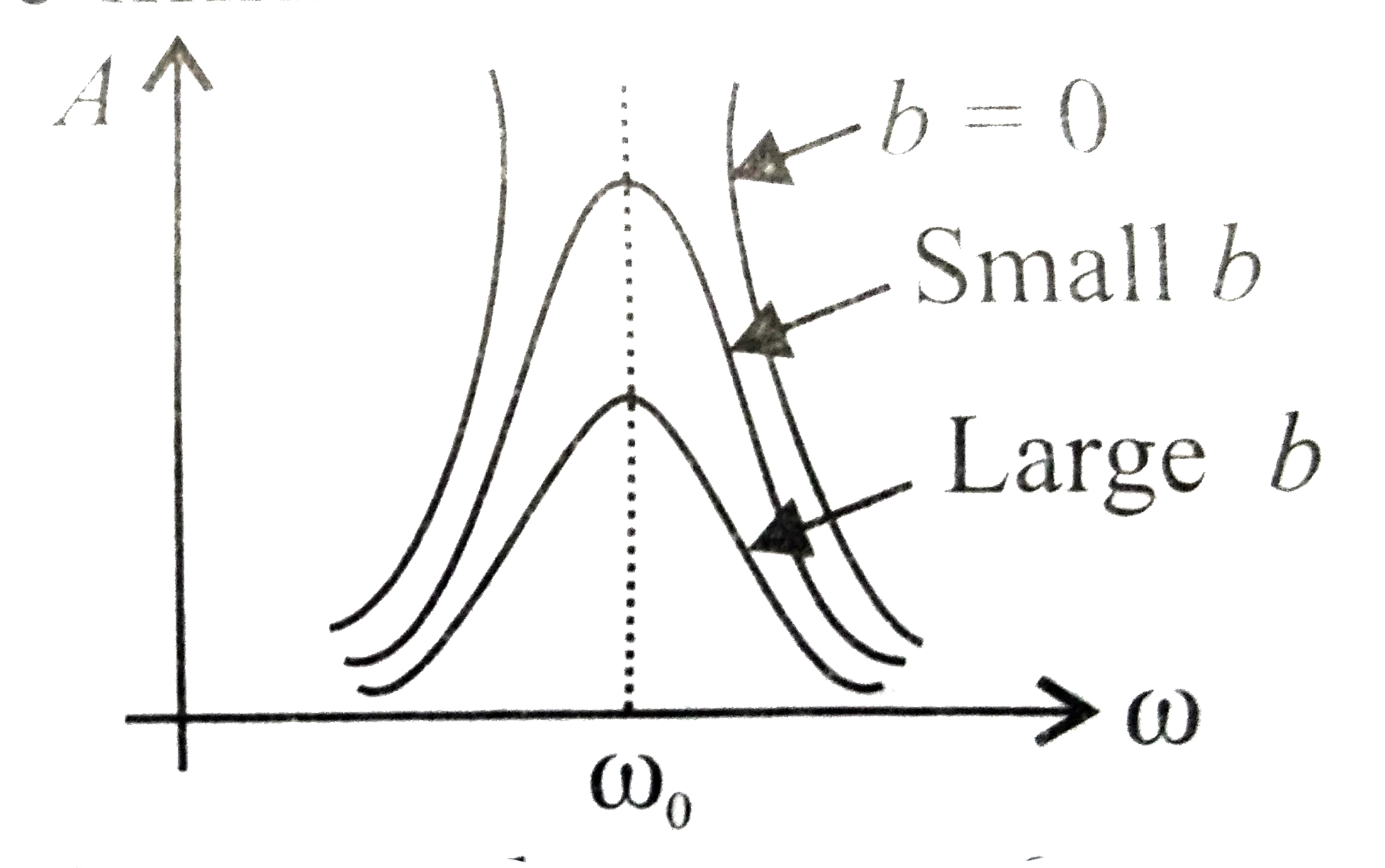Assertion : The amplitude of oscillation can never be infinite. Reason : The energy of oscillator is continuously dissipated.
If both assertion and reson are true and reason is the correct explanation of assertion
If both assertion and reason are true but reason is not the correct explanation of assertion.
If assertion is true but reason is false.
If both assertion and reason are false.
The correct Answer is:A
A=F0/m√(ω2−ω20)2+(bω/m)2
From above equation, amplitude of oscillation, in absence of damping force (b=0), that the steady state amplitude approaches infinity as ω→ω0. That is, if there is not resistive force in the system and then it is possible to drive an oscillator with sinusoidal force at the resonance frequency, the amplitude of motion will build up without limit. this does not occur in practice because some damping is always present in real oscillation. due to presence of various dissipative force in the system, the amplitude of oscillation can grow to a large value only but cann never be infinite

The graph showing amplitude as function of frequency for the forced oscillator with varying resistive force.
Topper's Solved these Questions
- BOOK - NCERT FINGERTPS ENGLISHCHAPTER - OSCILLATIONS EXERCISE - Periodic And Oscillatory Motions7videos
OSCILLATIONS
- BOOK - NCERT FINGERTPS ENGLISHCHAPTER - OSCILLATIONS EXERCISE - Simple Harmonic Motion17videos
OSCILLATIONS
- BOOK - NCERT FINGERTPS ENGLISHCHAPTER - OSCILLATIONS EXERCISE - Exemplar Problems9videos
OSCILLATIONS
- BOOK - NCERT FINGERTPS ENGLISHCHAPTER - MOTION IN A STRAIGHT LINEEXERCISE - NCERT Exemplar6videos
MOTION IN A STRAIGHT LINE
- BOOK - NCERT FINGERTPS ENGLISHCHAPTER - PHYSICAL WORLDEXERCISE - Assertion And Reason10videos
PHYSICAL WORLD
Similar Questions
Knowledge Check
- Question 1 - Select One
At resonance, the amplitude of forced oscillations is
AminimumBmaximumCzeroDnone of these - Question 2 - Select One
The kinetic energy of a particle, executing S.H.M. is 16 J when it is in its mean position. IF the amplitude of oscillation is 25 cm and the mass of the particle is 5.12 Kg, the time period of its oscillations is
Aπ/5 secB2πsecC20πsecD5π sec - Question 3 - Select One
Assertion: In damped oscillation, the energy of the system is dissipated continuously.
Reason: For small damping, the oscillations remain approximately periodic.AIf both assertion and reson are true and reason is the correct explanation of assertionBIf both assertion and reason are true but reason is not the correct explanation of assertion.CIf assertion is true but reason is false.DIf both assertion and reason are false.
Assertion : All small oscillation are simple harmonic in nature.
Reason : Oscillation of spring block system are always simple harmonic whether amplitude is small or large.View SolutionAssertion: If we see the oscillations of a stretched wire at higher overtone mode, frequency of oscillation increases but wavelength decreases.
Reason: From v=fλ,λ∝1f as v = constant.View SolutionConsider a damped oscillation due to air resistance. It is given that air resistance is directly proportional to velocity but in opposite direction. It us found that amplitude reduces to half in20 oscillations. Whaat eill be amplitude when it completes80oscillations? (Initially amplitude is 15 cm)
View SolutionAssertion: If the amplitude of a simple harmonic oscillator is doubled, its total energy becomes double.
Reason: The toal energy is directly proportional to the amplitude of vibration of the harmonic oscillator.View SolutionAssertion: In the ideal case of zero damping, the amplitude of simpl harmonic motion at resonance is is infinite.
Reason: All real sysmtems have some damping.View Solution
